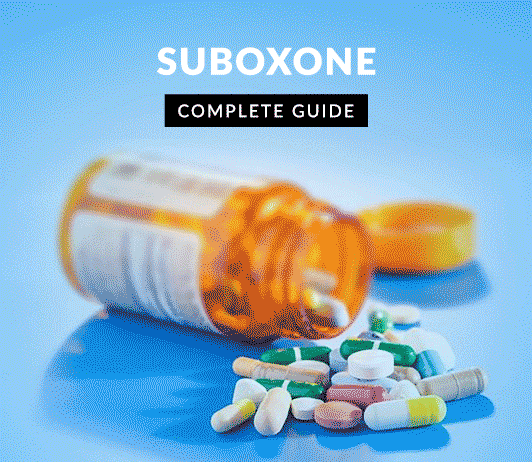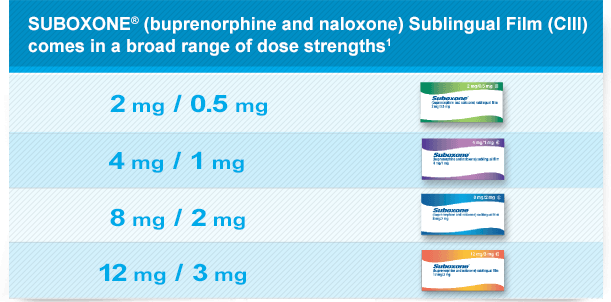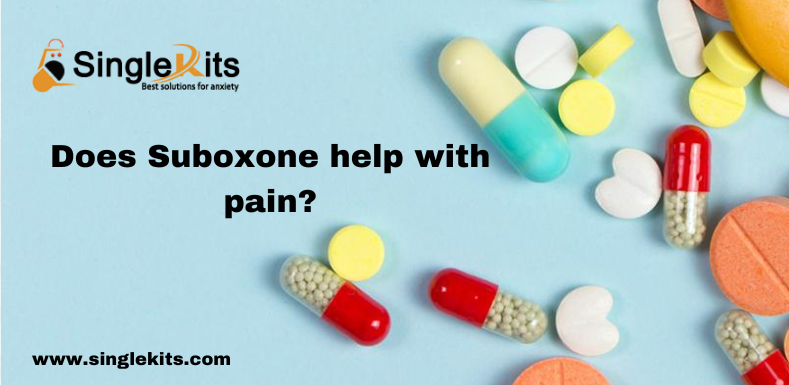Page Contents
What is Suboxone, and what are its medical uses?
Suboxone is a medication to treat dependence on narcotic (opioid) drugs such as morphine or heroin in drug addicts who have agreed to the treatment of their opioid addiction. Suboxone is used in children over 15 years and adults also receiving psychological, medical, and social support. You can buy Suboxone online from our pharmacy website because we deliver 100% genuine medicines to you.

Buy Suboxone online.
Suboxone contains two active substances, naloxone and buprenorphine. Buprenorphine is a partial opioid agonist, and it acts like an opioid drug. Naloxone is an opioid antagonist, i.e., it counteracts the effects of opioid medications. The addition of naloxone discourages inappropriate drug use because if the medicine is misused, it leads to severe withdrawal symptoms.
Suboxone, a combination drug, is a common medication used to treat opioid addiction. Using medications for opioid use disorder is called MOUD. The use of MOUD lowers the risk of fatal overdoses by 50%. It also decreases the risk of nonfatal overdoses, which are medically dangerous and traumatic.
Suboxone acts by tightly binding to the same receptors in the brain as other opiates, like oxycodone, heroin, and morphine. By doing so, Suboxone blunts intoxication with these other drugs, it works to prevent cravings, and it allows many people to transit back from a life of addiction to a life of safety and normalcy.
Does Suboxone help with pain?
FDA does not approve the use of Suboxone (buprenorphine and naloxone) sublingual film as a pain relief medication. Suboxone drug is only approved to treat narcotic (or opiate) addiction (opioid use disorder). Only single-agent buprenorphine (i.e., without naloxone) is approved to treat pain. You can order Suboxone 2 mg online from our pharmacy website to overcome your opioid addiction.
What is the mechanism of working of Suboxone?
Suboxone is available as tablets and sublingual film strips. It contains two primary ingredients, namely:
- Buprenorphine – Buprenorphine is a partial opioid medicine that acts by blocking the opioid receptors in our brain. Buprenorphine generates effects similar to morphine and heroin in low to moderate doses. However, these effects are pretty weaker.

- Naloxone – This ingredient in Suboxone is an opioid antagonist (i.e., inhibitor) that acts by blocking the effects of opioids.
The naloxone and buprenorphine combination works together to block withdrawal symptoms associated with opioid addiction. Buprenorphine reduces withdrawal symptoms and opioid cravings without fully activating the opioid receptors, whereas naloxone works in the background as a deterrent to decrease relapses and overdoses during recovery.
How Long Does it Take Suboxone to act?
Suboxone begins to work within 20 to 60 minutes of your first dose. The drug reaches peak level within two to three hours and blocks opioid receptors for a minimum of 24 hours. However, this may differ for different individuals based on factors such as:
- Metabolism rate
- Age
- Weight
- History of substance misuse.
For Suboxone to work effectively, one must take the first dose during the acute withdrawal stage. Buy Suboxone 8 mg online from our site because we provide medicines to our users at affordable prices.
How Long Does Suboxone Stay in the System?
Numerous factors influence the duration in which Suboxone remains in the body. And one such determining factor is the half-life of Suboxone. A half-life means the amount of time needed for half of a substance to leave your body entirely. The buprenorphine in Suboxone has a long half-life of about 24 to 42 hours. Since it takes around five half-lives for a substance to entirely leave the body, it may take approximately seven to nine days for buprenorphine to leave your body entirely. However, depending upon the duration of treatment, traces of buprenorphine may remain detectable in your body for longer. Naloxone, the other ingredient in Suboxone, has a half-life of about two to 12 hours and may stay in your body for up to 60 hours.
What are the benefits of Suxodone as per studies?
Suboxone was as effective as buprenorphine independently and more effective than placebo (a dummy treatment) at decreasing the use of opioids. In a study involving 427 heroin-dependent patients, 18.8% of patients who received Suboxone had no trace of opioids in their urine after four weeks, compared with 6.8% of patients receiving placebo. Patients also used a validated questionnaire to keep track of their cravings. The craving score, which was between 63.4 and 66.6 before treatment, reduced at the end of the study to 28.8 with Suboxone, compared with 56.1 with placebo.
What should I know before buying Suboxone online?
- Suboxone should not be administered in patients with severe liver problems or severe respiratory insufficiency (difficulty breathing).
- It should also not be administered in patients with delirium tremens (a condition caused by alcohol withdrawal), acute alcohol intoxication (excessive alcohol consumption), or together with medicines called opioid antagonists used to treat opioid or alcohol dependence.
How should I take Suboxone, and what dosage of Suxodone should I take?
Suboxone is available as a film. You must place it either under your tongue or inside your cheek, where it will dissolve in about five to ten minutes. It would be best if you used Suboxone under the supervision of your doctor, who has experience in the management of opioid addiction. One can only obtain the drug by a special prescription, which means that it is used under stricter conditions than usual. This medication can lead to addiction, so this measure is needed to reduce misuse.
The precise way to use Suboxone depends on the patient’s state of withdrawal, type of addiction, and whether the person is already using another substitution treatment like methadone before starting Suboxone. When starting treatment, you must place Suboxone under your tongue. Once the person is stabilized on a maintenance dose, the Suboxone film can also be placed inside the cheek.
The recommended starting dose of Suboxone is 4 milligrams of buprenorphine and 1-milligram naloxone. Depending on the patient’s response, the doctor can increase the amount, but the daily dose must not exceed 24 milligrams of buprenorphine. Once the person has been stabilized, the maintenance dose can be reduced gradually, and eventually, treatment can be stopped. The patient’s liver should be checked before starting treatment with Suboxone and regularly monitored during the treatment with Suboxone. Doctors should recommend lesser starting doses of Suboxone for patients with mild to moderately decreased liver function. The effectiveness of Suboxone treatment depends on the patient also receiving other social, medical, and psychological support.
What are the side effects of using Suxodone?
- The most common side effects of Suboxone (which can affect more than 2 in 10 people) are nausea (feeling sick), insomnia (difficulty sleeping), sweating, constipation, headache, and withdrawal syndrome.
- These severe reactions are also possible while using Suboxone- addiction, abuse, misuse, respiratory, CNS depression, neonatal opioid withdrawal syndrome, adrenal insufficiency, opioid withdrawal, hepatitis, hepatic events, hypersensitivity reactions, orthostatic hypotension, and the elevation of cerebrospinal fluid pressure.
What other medications will interact with Suboxone?
You can experience withdrawal symptoms or breathing problems if you stop or start taking certain other medicines with Suboxone. Tell the doctor if you also use antifungal, antibiotic medication, seizure medication, heart or blood pressure medication, or medicine to treat hepatitis C or HIV. Opioid medication can interact with many other drugs and cause dangerous side effects or even death.
Ensure your doctor knows if you also use:
- medicines for irritable bowel syndrome, motion sickness, or overactive bladder;
- bronchodilator asthma/COPD medication, cold or allergy medicines, or a diuretic (water pill);
- a sedative like Valium- lorazepam, diazepam, alprazolam, Xanax, Versed, Klonopin, and others;
- other narcotic medications–opioid pain medication or prescription cough medicine;
- drugs that make you dizzy or slow your breathing– a sleeping pill, medicine to treat mood disorders or mental illness, muscle relaxer; or
- medications that affect serotonin levels in your body–a stimulant or drug for depression, serious infections, Parkinson’s disease, migraine headaches, or nausea and vomiting

